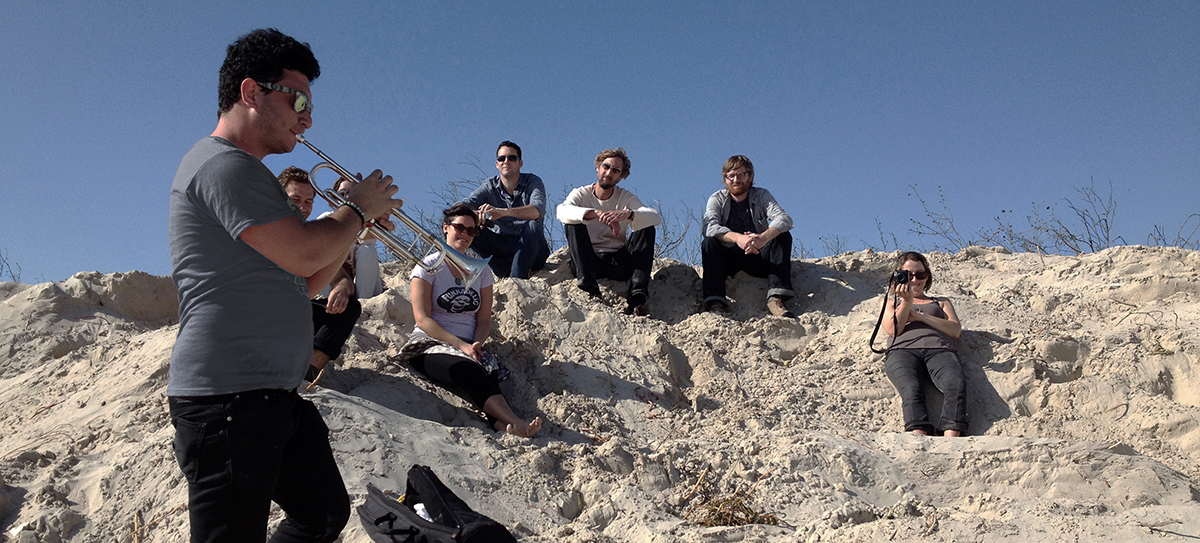
BLIND SIDED
Spring 2013 | University of Texas Marine Science Institute | Port Aransas, Texas
Project Team: Timothy Campbell, Todd Ferry, Garland Fielder, Matt Krolick, Jon Mautz, Lauren Mullane, Annie Palone, Katherine Russett, Jessica Zarowitz
Port Aransas is on the northeast tip of Mustang Island, one of the five barrier islands that make up the over 350 miles of Texas Gulf Coast. Here Aransas Pass provides access to Corpus Christi Bay, one of the busiest seaports in the United States. While primarily a tourist destination, Port Aransas has set aside relatively large undeveloped areas of tidal marsh, sand flats and mostly intact dunes for wildlife and visitors.
An interdisciplinary team of architecture and landscape architecture students collaborated to design + build a wetland educational project located on the campus of The University of Texas Marine Science Institute (MSI) in Port Aransas. The project was constructed for the National Estuarine Research Reserve System (NERR). NERR collects data on the health of our nation’s wetlands and has an active educational outreach program. Intended primarily for middle-school children whose classes frequently tour NERR’s Wetlands Education Center (WEC), the design/build project is used to teach about wetland ecology and environmental responsibility. The goal of this project was to design a place that would engage and inspire young visitors, bringing them closer to nature while letting them measure themselves against the world and their place within it.
In collaboration with the ecologists, marine biologists, and educators at NERR, UTSOA students set out to design a project around three elements: path, shade, and seating. Concrete pavers laid out a new approach that connected the wetland education center’s main walking path to the student-built shade screen. This perforated structure doubled as a bird blind and protected area from wind, which is quite often a problem there. This structure of 2xs emerges from the dunescape and extends along the water’s edge of mangrove, sea grasses, and oyster reefs. Along this edge, nine individually designed concrete seats invite visitors to sit and relax while taking in the wetland grasses, marine and avian life up close.
Materials chosen for the project—rough-sawn cedar, treated pine, and hardened steel oil pipe—were selected for their durability against the harsh salt climate of the ocean’s edge. Breaks in the shade screen were accented by recycled steel oil pipe from nearby oilrigs in the Gulf of Mexico. The gabion base of the shade structure seating was filled with oyster shells recycled from local restaurants.
The American Institute of Architects, Austin Chapter recognized this project with a 2013 Excellence in Design Award.